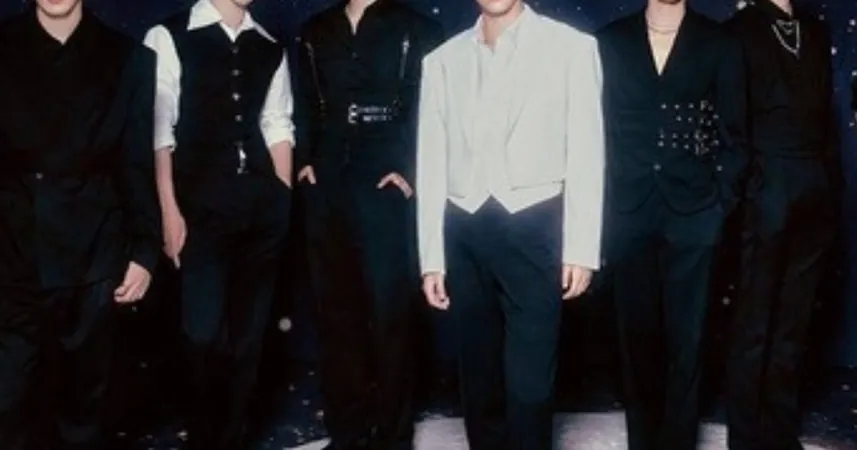
Unlocking the Secrets of Meteor Showers: How the Sun's Wobble Plays a Key Role
2025-04-18
Author: Li
The Cosmic Dance of Comets and Meteor Showers
Imagine comets blazing across the night sky, shedding dust trails that sometimes culminate in spectacular meteor storms on Earth. For years, astronomers simply pointed fingers at planetary movements for the unpredictable behavior of these meteoroid streams.
But a groundbreaking study by scientists from the SETI Institute, Stuart Pilorz and Peter Jenniskens, reveals a more nuanced truth: the Sun itself, and its motion around the solar system's barycenter, is the hidden architect of these celestial phenomena.
Barycenter: The Real Center of the Solar System
Contrary to conventional thinking, the Sun doesn't dominate its orbit alone. Instead, both it and the planets revolve around a common center of mass known as the solar system barycenter.
This cosmic dance results in subtle gravitational nudges to long-period comets each time they venture closer to the inner solar system. Over centuries, these small pushes transform tightly-coiled meteoroid ribbons into broader, wandering streams.
The Flaws in Traditional Orbital Models
Most models position the Sun at the center, simplifying calculations since it holds over 99% of the solar system's mass. However, this simplification obscures a vital mechanism responsible for dispersing long-period comet streams.
"Long-period comets are so distant that they primarily feel the pull of the barycenter,” explains Pilorz. "Yet, every few centuries, they swing into the Sun’s domain, triggering jet emissions of gas that release dust grains along their path."
The Sun's Sneaky Influence on Meteoroids
As these dust grains approach the Sun, they experience gravitational shifts due to the Sun’s movement—a little kick that can alter their orbits significantly. Pilorz likens it to bouncing a tennis ball against a moving train, where the ball's speed changes based on the train's direction.
The Wobble Connection: A 60-Year Meteor Cycle
Jenniskens's theory about the Sun's wobble dates back to 1995, when he discovered that certain ephemeral meteor showers appeared to follow a 60-year cycle tied to the gravitational influences of Jupiter and Saturn.
The duo even traveled to Spain to witness one of these fleeting showers, famously dubbed ‘stars falling at midnight.’ The shower lasted a mere 40 minutes but featured a dazzling meteor every minute.
Understanding the Meteor Stream Dynamics
When meteoroids orbit within Jupiter's path, they abandon barycentric motion and follow the Sun directly. Once they swing back outward, they revert to the barycentric dance.
Pilorz noted that the two brief shifts as the comet swings into and out of the Sun's orbit cause slight alterations in the meteoroid's trajectory, affecting the stream's dispersion over time.
The Final Piece of the Puzzle
The ongoing tug-of-war between Jupiter and Saturn and the Sun’s movements mean that while planetary forces play a role, the Sun's own “wander” significantly influences the meteoroid spread.
This new understanding equips astronomers with better tools to forecast when Earth will next intersect a dense cometary stream, offering valuable insights for both star-gazers and satellite operators concerned with space debris.
A Glimpse into the Future of Meteor Predictions
This revelation not only simplifies predictions about meteor showers but also helps trace the cosmic breadcrumbs back to their long-lost parent comets. Now, thanks to this research, we can appreciate the elegant mechanics behind what once appeared as random chaos in our night skies.
The study has been published in the journal Icarus, shedding light on the Sun's sway as a crucial force driving the rhythm of meteor showers that occasionally transform our skies into dazzling spectacles.



 Brasil (PT)
Brasil (PT)
 Canada (EN)
Canada (EN)
 Chile (ES)
Chile (ES)
 Česko (CS)
Česko (CS)
 대한민국 (KO)
대한민국 (KO)
 España (ES)
España (ES)
 France (FR)
France (FR)
 Hong Kong (EN)
Hong Kong (EN)
 Italia (IT)
Italia (IT)
 日本 (JA)
日本 (JA)
 Magyarország (HU)
Magyarország (HU)
 Norge (NO)
Norge (NO)
 Polska (PL)
Polska (PL)
 Schweiz (DE)
Schweiz (DE)
 Singapore (EN)
Singapore (EN)
 Sverige (SV)
Sverige (SV)
 Suomi (FI)
Suomi (FI)
 Türkiye (TR)
Türkiye (TR)
 الإمارات العربية المتحدة (AR)
الإمارات العربية المتحدة (AR)